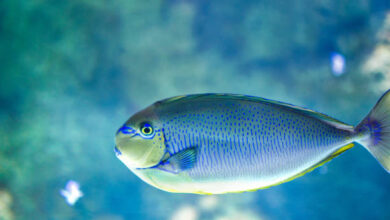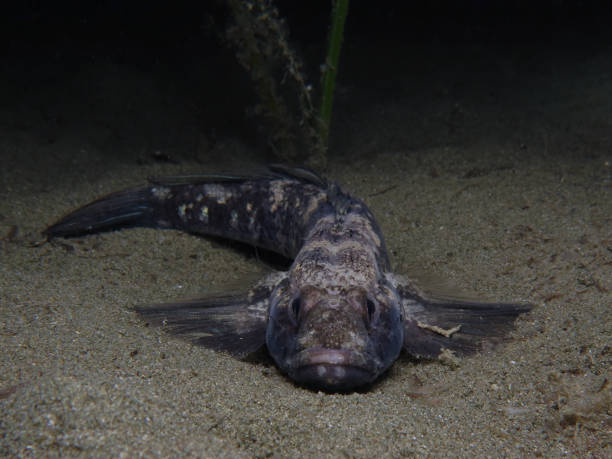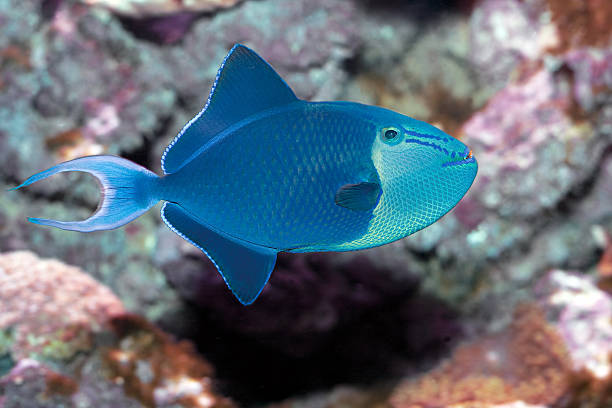What is the 10 characteristic of lobe-finned fish?
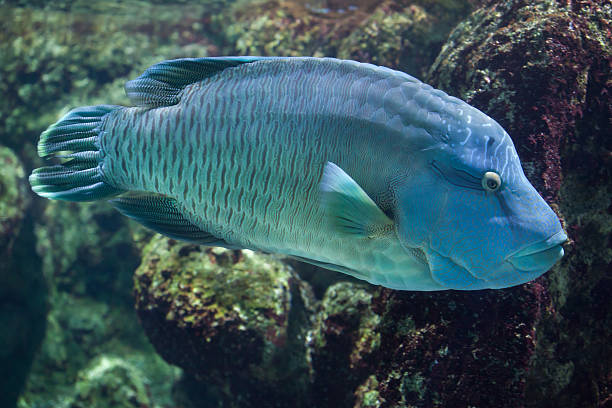
Lobe-finned fish are a fascinating group of aquatic animals that have been around for millions of years. These fish have unique features and adaptations that set them apart from other types of fish. In this blog post, we will explore the 10 characteristics that define lobe-finned fish and make them such interesting creatures. From their physical appearance to their behavior and evolutionary history, we will delve into the world of lobe-finned fish and uncover the traits that make them stand out in the underwater realm. So, let’s dive in and discover what makes these fish so special!
Unique Body Structure
The term ‘lobe-finned’ is not just a catchy name, it originates from the fish’s distinct fin structure. Most fish flaunt fins supported by slender, flexible spines. However, lobe-finned fish break the mold with their robust, bony fins that remarkably resemble terrestrial animal limbs. Instead of just flowing with the water, these fins have joints, giving them the freedom to maneuver in ways their thin-finned counterparts can’t. This adaptability grants these prehistoric fish an edge in navigating their watery domain and sets them apart as marvels of marine evolution. Let’s appreciate the beauty of lobe-finned fish and their unconventional appendages!
Types of Lobe-Finned Fish
Our aquatic journey introduces us to three fascinating types of lobe-finned fish: lungfish, coelacanths, and tetrapodomorphs. Lungfish and coelacanths are the last of their kind, still living and breathing the essence of prehistoric times. They are like time travelers, carrying stories of a past era in their DNA. On the other hand, tetrapodomorphs may not share our time, but they have an indelible impact on life as we know it. They represent the extinct lineage that has laid the foundation for amphibians and terrestrial vertebrates.
Although these fish are distinct in many ways, they all share the intriguing feature of lobe-fins, a characteristic that makes them a subject of our exploration. Each type has its own unique tales to tell and secrets to unveil, as we delve deeper into the mesmerizing world of lobe-finned fish.
Pioneers of Walking on Land
The saga of evolution holds many thrilling chapters, one of the most exciting being the epic transition from water to land. And guess who the trailblazers of this monumental feat were? Yes, our underwater heroes, the lobe-finned fish! These aquatic marvels, with their sturdy, lobed fins, are seen as the evolutionary forerunners of terrestrial walking. Their fins weren’t just for swimming; they served as blueprints for the first tetrapod legs, bringing about a seismic shift in the course of life’s journey on Earth. This unique adaptation of lobe-finned fish opened a brand new chapter in the book of evolution, setting the stage for life as we know it today.
So the next time you go for a leisurely stroll, spare a thought for these incredible fish, the original pioneers of taking the first steps on land, about 375 million years ago! Now, isn’t that a journey worth celebrating?
Breathing Capabilities
Here’s an interesting fact that may take your breath away – most lobe-finned fish, particularly lungfish, have the astounding ability to breathe in both water and air. Now, you might wonder, “how’s that possible?” The answer lies in their dual respiratory system – a remarkable combination of gills and lungs. This extraordinary feature allows these aquatic explorers to harness oxygen from two different mediums – water and air.
Imagine the survival advantage this capability offers! During parched periods when water bodies recede and the aquatic oxygen supply dwindles, these resilient fish don’t gasp for breath. Instead, they simply switch to their built-in aerial respiratory mode, efficiently drawing oxygen directly from the air. Talk about flexibility! Their extraordinary breathing capabilities demonstrate the ingenious adaptability of lobe-finned fish and their mastery over both aquatic and terrestrial environments. So, next time you find yourself gasping for air, remember the humble lobe-finned fish and their breathtaking survival skills!

Living Fossils
Take a moment to marvel at coelacanths, a subset of lobe-finned fish that boasts an impressive title – living fossils. For over 300 million years, these underwater survivors have managed to resist the hands of time, remaining virtually untouched by the wave of evolution. Scientists had chalked them off as extinct, resigning their existence to the confines of fossil records. But in a dramatic twist worthy of a Hollywood movie, a live coelacanth was discovered in 1938, stunning the scientific community and rewriting marine biology textbooks.
As if resurrected from the past, they serve as living proof of an era long gone, providing us with a unique window into our aquatic ancestry. Imagine swimming with a creature that existed before the dinosaurs! This unexpected encounter with the past embodies the essence of exploration and discovery. It’s like shaking hands with history, one fin at a time. Their extraordinary journey through time brings to light the remarkable resilience of nature and the awe-inspiring saga of survival that is the story of lobe-finned fish.
Metabolic Rate and Longevity
Delving deeper into the captivating life of lobe-finned fish, let’s explore the secrets behind their incredible longevity and adaptability. The magic lies in their low metabolic rate. This remarkable trait allows them to flourish in environments where others would struggle to survive, including low-oxygen habitats. It’s like having a superpower that helps them endure when the going gets tough. But there’s more to this slow-and-steady approach to life. The reduced metabolic rate also contributes significantly to their exceptional lifespan.
Believe it or not, some of these ancient aquatic wonders are known to celebrate over a century of birthdays! Talk about an underwater saga of survival and endurance! So, the next time you find yourself marveling at the tales of a tortoise’s long life, spare a thought for the lobe-finned fish, gracefully cruising through the centuries in their underwater realm. Their extraordinary life strategy truly underscores the infinite wisdom of nature and the diverse paths it creates for survival.
Thick and Robust Scales
Dive a little deeper into the captivating world of lobe-finned fish, and you’ll discover their armor-like scales. Unlike the thin and flexible scales we see on most marine creatures, lobe-finned fish sport a robust armor of thick, hard scales. This isn’t just a style statement. This tough exterior serves a vital function – protection. Acting like a shield, these scales safeguard our ancient aquatic heroes from the onslaught of predators and the harsh realities of their environment. Their scales are not just a cover, they are a testament to the fish’s resilience, an adaptation refined over millions of years.
Just think of them as knights of the deep sea, clad in armor and ready to face any challenge that comes their way! So the next time you imagine a fish, don’t just picture a soft, slimy creature. Remember the lobe-finned fish and their fortified scales that stand as a testament to their enduring presence in the Earth’s watery realm. This remarkable adaptation is another piece of the puzzle that helps us understand the intriguing journey of these aquatic marvels.
Teeth and Eating Habits
Venturing into the intriguing culinary world of the lobe-finned fish, we encounter a fascinating adaptation – a distinctive dental arrangement tailored for a carnivorous diet. Have you ever pondered the role of teeth in a fish’s life? Here’s your chance to gain some insight. The front teeth of these ancient aquatic marvels are sharp and conical, perfect for gripping onto their prey in the vast underwater buffet. Once the prey is within their clutches, it meets with the back teeth – flat, hard surfaces ideal for grinding down the stubborn shells of invertebrates. It’s an impressive biological tool kit, reflecting the fish’s predatory lifestyle.
Imagine the power, the precision, and the efficiency that this specialized dental arrangement brings to each meal! This incredible adaptation is not just about survival – it’s also about mastering their environment and thriving in the competitive underwater world. Next time you enjoy a hearty meal, think about the lobe-finned fish and their intriguing teeth, specially designed for their carnivorous lifestyle. Their dietary adaptations remind us of the endless ways in which life evolves and adapts, one bite at a time!
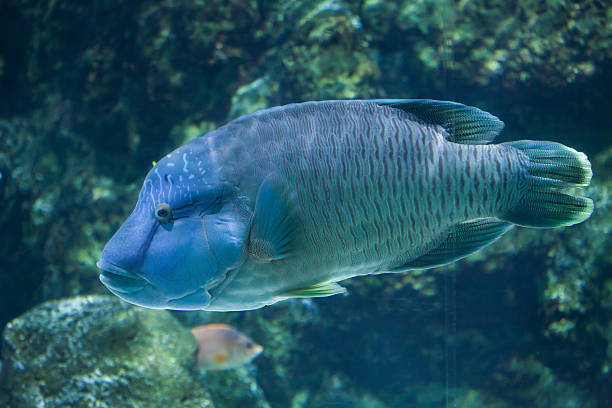
Nest Building and Parental Care
Venture further into the intriguing lives of certain lobe-finned fish, particularly lungfish, and you will stumble upon a fascinating spectacle of parental care. Embodying a profound sense of responsibility, these underwater parents are diligent architects, building secure nests for their offspring. They meticulously gather debris and sediments, crafting a safe haven where they lay their precious eggs. But the commitment doesn’t stop there! They guard these nests with fierce determination, keeping vigilant watch over their brood until the young ones are ready to venture out on their own.
This display of sophisticated behavior, usually associated with higher vertebrates, serves as a testament to their remarkable cognitive abilities. Picture this, in the depths of the aquatic world, a fish is working tirelessly, not just for its own survival, but for the safety and well-being of its offspring. A beautiful display of parental devotion, wouldn’t you agree? As we explore the world of lobe-finned fish, their dedication to their young stands as a vivid reminder of the intricate and diverse ways life unfolds under the sea.
Evolutionary Significance
The importance of lobe-finned fish cannot be overstated when it comes to their role in the evolutionary theater. They are the main characters in one of the most awe-inspiring acts – the epic shift from the depths of the sea to the expanses of land. Just imagine, these ancient mariners were among the first to tread the path that led to the emergence of diverse terrestrial life, from the tiniest insect to the mightiest dinosaur and even to us, humans. Their robust fins, so much like limbs, served as the biological blueprint for the development of legs, revolutionizing life’s journey on Earth.
This makes them more than just fish, but connectors, bridging the aquatic world with the terrestrial, and offering us invaluable insights into our own deep-rooted lineage. Isn’t it mind-boggling to think that our terrestrial existence may trace back to these underwater adventurers? The role of lobe-finned fish in the evolutionary drama truly illustrates the wonders of nature’s creativity and adaptability. Through their story, we are reminded that we are all part of an interconnected web of life, shaped by the same currents of evolution.
